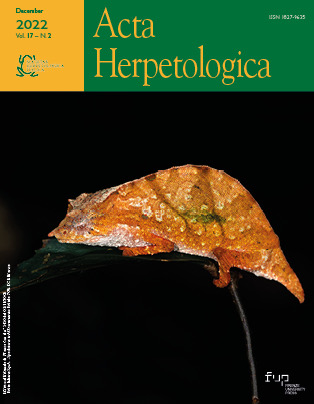Published 2022-11-07
Keywords
- Chromosome,
- evolution,
- karyotype,
- NORs,
- squamates
- snakes ...More
How to Cite
Abstract
Because of their peculiar genomic and chromosomal characteristics, reptiles are extraordinary model organisms to study karyotype and sex chromosome evolution, but despite the growing interest in their evolutionary cytogenetics, only a small fraction of species have a known karyotype. We performed a comparative cytogenetic analysis on Elaphe quatuorlineata and Zamenis lineatus, using classic and molecular techniques. We provide the karyotype of these two species and an assessment of their chromosomal features. Chromosome analysis was performed with standard karyotyping, C-banding, sequential C-banding + CMA3 + DAPI and Ag-NOR staining. On E. quatuorlineata, we also performed CMA3-methyl green staining and Fluorescence in situ Hybridization mapping NOR loci (NOR-FISH). Elaphe quatuorlineata and Z. lineatus show a very similar karyotype of 2n = 36, with 8 macro- and 10 microchromosome pairs, but differ in the morphology of the pair 8, which resulted submetacentric in the former and metacentric in the latter species. By comparing our data to those available from the literature on congeneric species, we analysed the occurrence of primitive and derivate chromosomal characters and provide cytotaxonomic insights, which further support the species status of Z. lineatus. In both species, the 4th pair was identified as the sex chromosome pair (ZZ/ZW) and NORs were localized on a microchromosome pair. We finally highlight in both genera Elaphe and Zamenis different stages of heterochromatinization of the W chromosome, in agreement with the progressive diversification model of sex chromosome as already shown in different reptile taxa.






